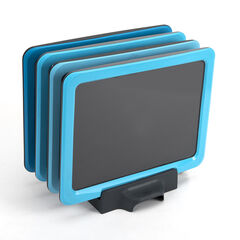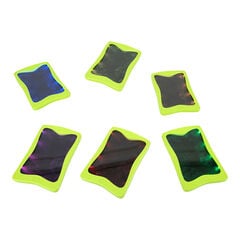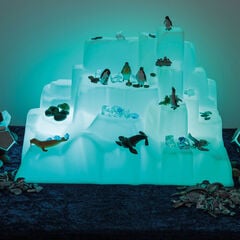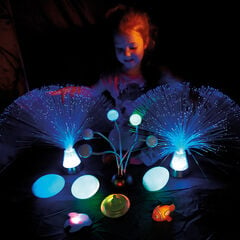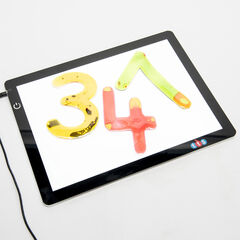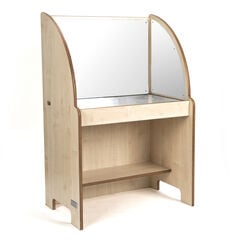Often in our environment, we provide light up sensory stimulation by adding fairy lights to our ceilings but there is something extra special about exploring light when children can actually play with and handle the items. These light up cubes, stars and rollers have been a great addition to our sensory room as children can, not just explore their senses, but explore their schema play by stacking, rolling, sorting, moving and hiding the items.
We combine our light up resources with mirrors and mirrored items; these items reflect the light and allow children to explore further how light works, looking particularly at what effect the coloured lights have on the colour of mirrored items. Lighting isn’t only for your sensory room, these light up blocks have featured in our construction area, small world play and used as mood lighting during sleep time.
As children get older these colour changing light up boards are brilliant; every time the children use these they are so much more engaged, they show high levels of curiosity and will mark make for prolonged periods of time. The children love nothing more than drawing or writing something and looking at it in all the different colours by using the button to change the colour of the light. These are great for engaging reluctant learners.
These boards have been so popular we have incorporated them into many different areas of development. We have combined them with loose parts and created story scenes, we have used them to engage children in counting, in addition to writing names.The new giant light up boards are also a great addition. These are great for creating small world scenes and collaborative work.
Another great way to add light to your continuous provision is by adding an overhead projector, children can use loose parts and clear items to create shadows and colours.
In addition to this, children can explore their own shadows, looking at how their body can affect the light.
So, next time you are trying to extend your provision, provocations and themes further, why not add some light up resources from the gallery below to stimulate the senses?
View the full light up learning range here
With thanks to Laura England – Little Miss Early Years – an early years teacher, enthusiast and blogger, for writing this post. Follow Laura on Facebook, Instagram and over on her website.
Check out Laura’s other blog posts on Loose Parts and tinker trays here. And Loose Parts Play here.
The Little Learners Approach also discusses their Reggio approach in their showing children where to look but not what to see blog post here.


























